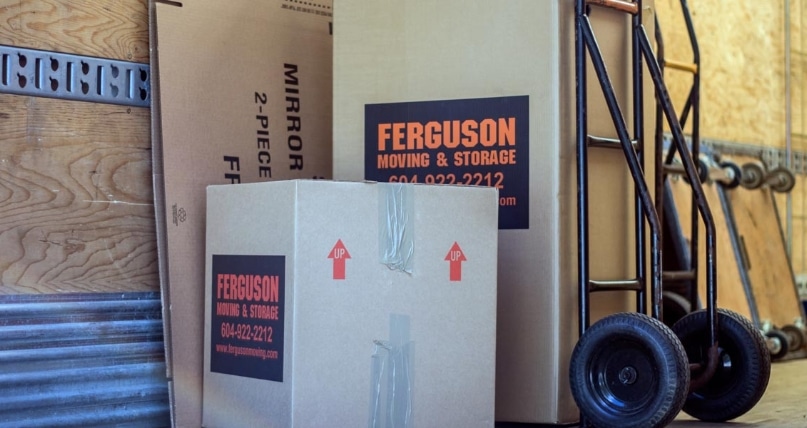- Moving Tips, Office Moving, Storage Solutions
Easy Steps To Organize Your Office Move

Organize your Office Move
When moving a corporation you may find it more stressful than moving your own home and family. You may feel as if you have less control over many aspects in a corporate move. You must follow a certain guideline that is provided to you by the company. Be sure to give yourself ample time to prepare, 3 moths is adequate. It is important that you follow the office-moving guideline. This will help relieve unfamiliarity which can cause you many head aches and unnecessary stress.
Getting prepared for the office move:
Plan everything out in advance, it is the most crucial part of moving an office or corporation. Corporations are typically about making money. If you company is not up and running, but instead moving, then your company is losing money. Being cost-efficient is the primary goal in a corporate move. Being time efficient is one of the best ways to reaching this goal. It is more cost-efficient for your company to spend the least amount of time moving.
The best ways to save time is to become very familiar with your new location and offices. It is a good idea to take measurements and knowing exactly how large the new rooms are. Take note in differences in shapes of the new room and or any of your office furniture. You want to make sure any new or old desks, chairs, filing cabinets etc. will all fit inside your new space. It is best to create a floor plan prior to the move; this will help to make sure everyone knows their new dimensions. Call Ferguson Moving and Storage to ask us about more tips to organize your office move.
The plan should include everything you plan on bringing to your new location. List by floor, location of employees, furniture etc. Every employee should receive should receive a copy of this plan, and post them on the building on the day of your move. Being well organized on move day will not only make it easier on your employees but on the movers as well.
Corresponding during a move:
The key to a corporate move is communication. Be sure everyone (employees, landlords, movers, renters, etc.) are aware of all the details. Before the actual move everyone needs to know the exact moving plan. The fewer questions on move day, the smoother the move will go. Instruct the movers as to where the exact place every piece of furniture needs to go. Many desks can look the same, but belong to specific employees, be sure to tell the movers the certain places you need them to be placed. An easy way of helping the movers distinguish these items is by using coloured labels. All the furniture that belongs on a certain floor can be labeled a certain colour. You can even get more specific but assigning a certain colour with a number for each employee. Labeling is one of the more important tools in an office move. Be sure you label all equipment and furniture that is being moved. Place the label in a spot that is easily visible to the movers. The move will go faster the easier and more understandable you make the move to the mover. Time means money.
Supervisors:
It is the supervisors’ responsibility to have staff follow the instructions in the Office Moving Guide. All employees in your department or section should receive an Office Moving Guide. If the move is properly planned, personnel will be functioning in the new offices on a normal basis immediately after reporting to work.
Employees:
You are responsible for your own packing of certain items before the actual move. Follow the instructions in the Office Moving Guide. This will assist you, not only before the move, but while you are unpacking the new office.
Items Being Moved:
You will want to securely pack any items inside of bookcases, shelving units, desks, or cupboards. You do not need to empty filing cabinets, but make sure they are either locked or secured by heavy packing tape or fastened with string.
Personal Items:
Personal possessions such as: legal papers, money, pictures, plants, lighters, fountain pens, etc. the mover cannot be responsible for. We suggest you move these items privately for your own protection. Ask your Moving Consultant if you need any special containers.
Desks:
Pack all the contents in your desk. This would include you current working papers, letter trays, books and other desk items. Be sure to seal lose paper clips, pens and pencils or any other loose materials in envelopes. Pack these items into boxes. All glass should be protected with paper or other stuffing.
Supply or Storage Cabinets:
Place all contents into boxes. Be sure the cabinet doors are locked or tied.
“Do Not Move”
You will come across items that you wish not to be moved and discarded. Label these items with “DO NOT MOVE”. Doing so will eliminate unnecessary expense.
Garbage:
Before the actual moving day, be sure to throw away as much garbage as possible. If necessary contact the city to get permission to have industrial sized dumpsters brought to you building. The more you dispose of the less you will have to pack! Be sure to watch what you are throwing out so nothing important gets thrown away.
Access to Floors Above Ground Level:
If there is no elevator access at your new building, be sure to inform the moving company so they can come prepared. Be aware of all elevators, examine your new building. Make sure they are in working order and large enough to move your furniture.
Moving Electrical Machines:
Many machines need to be handled in a specific way, before moving any machines be sure you know what you are doing. If you are renting your equipment, make sure you notify them before the day of you move. Properly disconnect and dismantle you computers. When taking apart your equipment, make sure you have an employee that know that they are doing. Photocopying machines must have all fluids removed. Loose parts can easily get lost, all parts should be securely fastened or place them into a separate box close by. If you have a vending machine, remove all items. Empty water from water dispensers. Items get lost easily in a move, take extra notice to any machines that are dismantled.
Quick Checklist:
- Are all desks empty?
- Have supplies cabinets been cleared?
- Have file cabinets been cleared?
- Are all filing drawers locked?
- Have wall items been taken down?
- Are breakable items properly packed?
- Have computers and other machines been disconnected?
- Have “DO NOT MOVE” tags been placed on items?
- Have liquids been drained from equipment?
- Have desk and chair pads been labeled?
- Do you have a set of spare keys?
- Are your internet connection, phones, and fax ready at the new office?
- Has the electricity been turned on?
- Are bathrooms functional?
- Have you changed your stationary to have your new address? (throw away any old stationary with the old address on it
If you are planning an office move or relocation in the Greater Vancouver area, we provide a variety of office moving services.

Categories
Moving Tips

This is the heading
Lorem ipsum dolor sit amet, consectetur adipiscing elit. Ut elit tellus, luctus nec ullamcorper mattis, pulvinar dapibus leo.

This is the heading
Lorem ipsum dolor sit amet, consectetur adipiscing elit. Ut elit tellus, luctus nec ullamcorper mattis, pulvinar dapibus leo.
We make moves easy for you.
- Local Moving
- Long Distance Moving
- Seniors Moving
- Piano Moving
- Item Relocation
- Overnight and Long-term Storage
- Packing Supplies





